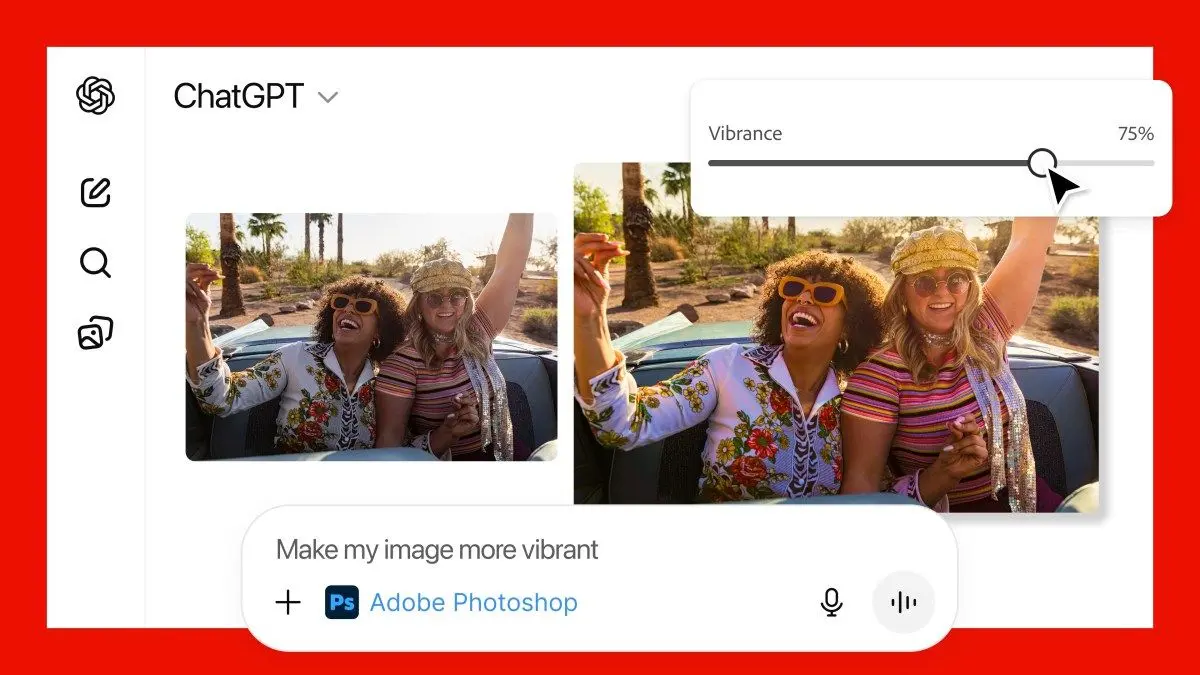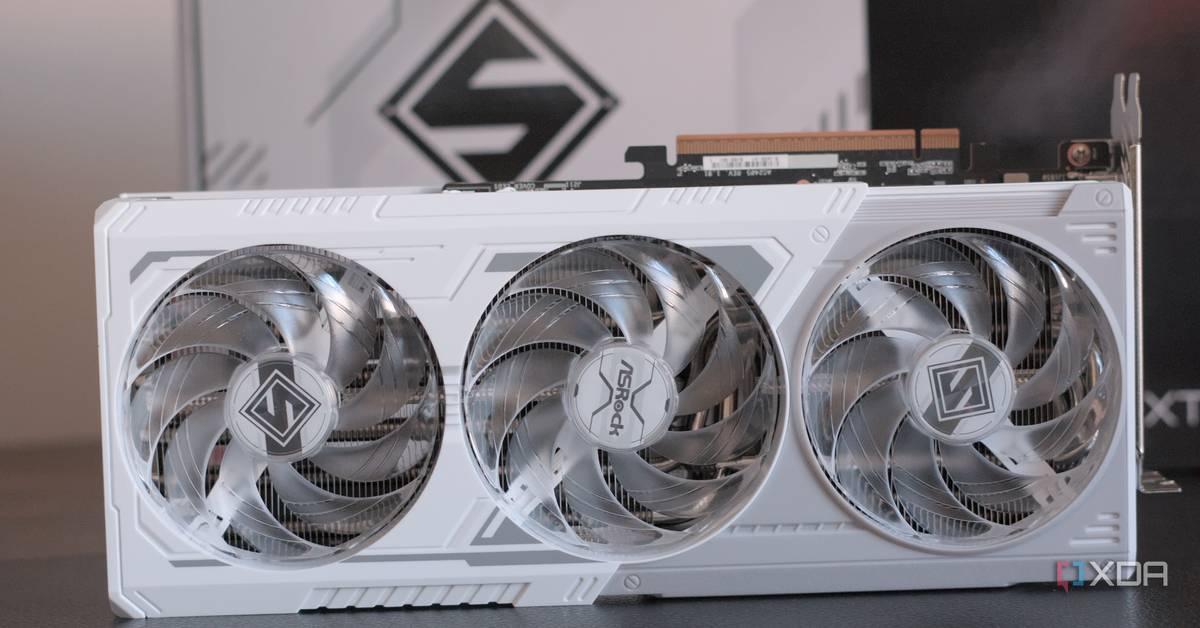Wimbledon's AI Line-Calling System Faces Criticism Amid Technical Glitches and Player Concerns
11 Sources
11 Sources
[1]
Tennis players criticize AI technology used by Wimbledon | TechCrunch
Some tennis players are not happy with Wimbledon's new AI line judges, as reported by The Telegraph. This is the first year the prestigious tennis tournament, which is still ongoing, replaced human line judges, who determine if a ball is in or out, with an electronic line calling system (ELC). Numerous players criticized the AI technology, mostly for making incorrect calls, leading to them losing points. Notably, British tennis star Emma Raducanu called out the technology for missing a ball that her opponent hit out, but instead had to be played as if it were in. On a television replay, the ball indeed looked out, the Telegraph reported. Jack Draper, the British No. 1, also said he felt some line calls were wrong, saying he did not think the AI technology was "100 percent accurate." Player Ben Shelton had to speed up his match after being told that the new AI line system was about to stop working because of the dimming sunlight. Elsewhere, players said they couldn't hear the new automated speaker system, with one deaf player saying that without the human hand signals from the line judges, she was unable to tell when she won a point or not. The technology also met a blip at a key point during a match this weekend between British player Sonay Kartal and the Russian Anastasia Pavlyuchenkova, where a ball went out, but the technology failed to make the call. The umpire had to step in to stop the rally and told the players to replay the point because the ELC failed to track the point. Wimbledon later apologized, saying it was a "human error," and that the technology was accidentally shut off during the match. It also adjusted the technology so that, ideally, the mistake could not be repeated. Debbie Jevans, chair of the All England Club, the organization that hosts Wimbledon, hit back at Raducanu and Draper, saying, "When we did have linesmen, we were constantly asked why we didn't have electronic line calling because it's more accurate than the rest of the tour." We've reached out to Wimbledon for comment. This is not the first time the AI technology has come under fire as tennis tournaments continue to either partially or fully adopt automated systems. Alexander Zverev, a German player, called out the same automated line judging technology back in April, posting a picture to Instagram showing where a ball called in was very much out. The critiques reveal the friction in completely replacing humans with AI, making the case for why a human-AI balance is perhaps necessary as more organizations adopt such technology. Just recently, the company Klarna said it was looking to hire human workers after previously making a push for automated jobs.
[2]
Game, set, botch: AI umpiring at Wimbledon goes long
Line-judging tech flubs crucial point, leaving players and fans seeing red "You cannot be serious" was likely uttered by more than a few folk watching Russia's Anastasia Pavlyuchenkova versus Britain's Sonay Kartal at Wimbledon yesterday after the tennis tournament's AI line-calling tech dropped the ball. For the first time in 146 years, line judges have been scrapped in favor of Hawk-Eye Live technology for the 2025 competition, but the system's shortcomings were laid bare at a critical juncture of the singles match. At 4-4, game point for Pavlyuchenkova, Kartal went long. At least Pavlyuchenkova seemed to think so, but in the absence of any call from Hawk-Eye, confusion rippled through the court. Umpire Nico Helwerth stopped play after a few seconds, followed by an awkward, automated "STOP STOP." Tennis rules state that if a line-calling system fails, "the call shall be made by the chair umpire. If the chair umpire is unable to determine if the ball was in or out, then the point shall be replayed. This protocol applies only to point-ending shots or in the case when a player stops play." After a phone call to check if Hawk-Eye was running, Helwerth told the audience: "The electronic line-calling system unfortunately was unable to track the last point so we will replay the point." Cue groans from commentators and jeers from the crowd - because it was obvious to any sentient being with eyes just how far out Kartal was. You can see for yourself in the BBC's footage. Kartal eventually won that game to take a 5-4 lead, a fact that clearly frustrated Pavlyuchenkova, who told the umpire: "I don't know if it's in or out. How do I know? How can you prove it? You took the game away from me ... They stole the game from me. They stole it." The Russian ultimately prevailed against the Brit, winning 7-6 (7-3) 6-4, but she still brought her disappointment into the post-match press conference. "I expected a different decision," she said. "I just thought also the chair umpire could take initiative, and that's why he's there for sitting on the chair, and he also saw it out." Referring to the growing prevalence of automated systems in the sport, she said: "I think we're losing a little a bit of the charm of actually having human being ball boys. During COVID, we didn't have ball boys and then it just becomes a little bit weird and robot-oriented." The error itself was chalked up to the meatbag operator rather than the AI itself. A spokesperson for the All England Club said: "Due to operator error the system was deactivated on the point in question. The chair umpire followed the established process." Despite being among AI tech's most powerful proponents, Microsoft research discovered that "confidence in AI is associated with reduced critical thinking effort, while self-confidence is associated with increased critical thinking." Which is sort of what happened here. Although Hawk-Eye is more about computer vision than the generative AI Microsoft is interested in, built from a network of ten cameras around the court that capture 60 high-resolution images per second, bureaucratic attachment to an automated system that is not infallible led to a baffling outcome that could have been avoided if people had just used their eyes. ®
[3]
Why don't we trust technology in sport?
For a few minutes on Sunday afternoon, Wimbledon's Centre Court became the perfect encapsulation of the current tensions between humans and machines. When Britain's Sonay Kartal hit a backhand long on a crucial point, her opponent Anastasia Pavlyuchenkova knew it had landed out. She said the umpire did too. Television replays proved it. But the electronic line-calling system - which means humans have been fully replaced this year following earlier trials - remained silent. Minutes ticked by. The human umpire eventually declared the point should be replayed. This time Pavlyuchenkova lost it. She went on to win the match but, in that moment, she told the umpire the game had been 'stolen' from her. She wondered aloud if it might be because Kartal was British. It later emerged the reason was a more mundane, but still quintessentially human reason: someone had accidentally switched the line judge off. That simple explanation hasn't stopped disgruntled discussions that - unlike strawberries, Pimm's and tantrums - the tech does not deserve a place among Wimbledon traditions. John McEnroe might have been a lot less famous in his prime if he hadn't had any human judges to yell at. More recently, Britain's Emma Raducanu expressed "disappointment" with the new technology after querying its decisions during her match on Friday Former Wimbledon champion Pat Cash disagrees. "The electronic line-calling is definitely better than the human eye," he told the BBC. "I have always been for it, since day one. Computer errors will come it at times, but generally speaking, the players are happy with it. "There have been a lot of conversations with players and coaches about the line-calling not being 100% this week. But it is still better than humans." He's right: the tech is demonstrably more accurate than the human eye across various sports. Diego Maradona's notorious 'Hand of God' goal at the 1986 World Cup would probably not have got past artificial intelligence. Wimbledon's electronic line-calling (ELC) system has been developed by the firm Hawk-Eye. It uses 12 cameras to track balls across each court and also monitors the feet of players as they serve. The data is analysed in real time with the help of AI, and the whole thing is managed by a team of 50 human operators. ELC has a rotation of 24 different human voices to announce its decisions, recorded by various tennis club members and tour guides. It may use artificial intelligence to analyse the footage, but the All England Lawn Tennis Club says AI is not used to directly officiate. The club also says it remains confident in the tech, and CEO Sally Bolton told the BBC she believes it's the best in the business. "We have the most accurate officiating we could possibly have here," she said. However, following Sunday's incident, it can now no longer be manually deactivated.
[4]
Farewell tradition, hello robots: Wimbledon adjusts to life without line judges
After 147 years, the championships are using an AI system for greater accuracy but some fans prefer the old 'drama' Sometimes progress registers simply as absence and so it was on the opening day of this year's Wimbledon when the pursuit of greater accuracy led to the disappearance of the tournament's famous line judges. Electronic line calls are now in operation in SW19, bringing the championships into line with the grand slams in Melbourne and New York and also the ATP Tour. The French Open still uses line judges. But the shift to camera based, AI-enhanced decision-making cuts deeper at Wimbledon, where up to 300 line judges have been a colourful part of the tournament's ensemble cast for the past 147 years. With protests outside the gates (albeit with tongue in cheek) and ambivalence among fans, there were also unexpected reactions from players to the changes. In the men's draw, Carlos Alcaraz and his first-round opponent Fabio Fognini were to be seen questioning the decision of the new system, apparently unaware that the ability to challenge a call is another tradition now consigned to the past. In the women's draw, meanwhile, Chinese player Yuan Yue complained the new system was too quiet for her to hear its decision. "The voice, I cannot really hear it, it is a bit too low", she said. "So I asked the referee can you [turn] it up a little bit. He said he cannot. He said he will try to let us know [the call] because he has a machine that can look it up. I don't really mind, I just want to hear it clearly. [The umpire's] voice is a lot more loud than the automatic one so we can hear that clear. Other tournaments don't really have this problem." The electronic line-call system was developed by Hawk-Eye and uses AI to analyse footage from up to 18 cameras tracking the progress of the ball across the court. If a serve is wide, or a forehand too long, manufacturers say the software will issue a notification within a tenth of a second. In a unique Wimbledon twist, those calls are then vocalised using recordings of the voices of staff from the All England Club. That can lead to an unusual experience in watching the play, or even competing in it. On court 18 during Cameron Norrie's first-round match against Roberto Bautista Agut, any declaration of "fault" used the voice of a (forceful) ball boy, whereas "out" calls were announced in the voices of adults, both male and female. In the lower courts there was also the a sense of disembodied calls floating between matches. Britain's Sonay Kartal lost a point at the Australian Open in January after she reacted to a call from a different court. Following her three-set victory over Jelena Ostapenko, however, she declared the conditions "perfectly fine", though she echoed Yuan's concerns. "I hit a few shots that were at a pretty big moment and the crowd kind of went nuts, so maybe I lost it a bit in that", she said. Sally Bolton, the chief executive of the All England Club, said the new system attempts to strike a typical balance between modernity and tradition. "For us, it was time to make that change", she said. "It's not a money-saving exercise, the technology investment we've had to make to deliver electronic line calling is not insignificant. It's about evolving the tournament and making sure that we're providing the most effective possible line calling. "The line judges have been such an important part of the championships for so many years, and we obviously hugely appreciate the service that they've provided. Quite a few of them, around 80, are still with us as match assistants in a new role, supporting the chair umpire." Verdicts from the spectators were largely sceptical. Though some had missed the changes altogether, many were grateful for the continued use of animated graphics on tight line calls, now known as "close calls", despite the end of the challenge system. Others, however, missed the simple pleasure of watching someone standing stock still at the back of a court, their eyes focused determinedly on a single point. "You're essentially removing the history and replacing it with a slightly robotic animated voice. It's all a bit numbing," said James from Ipswich, taking advantage of the shade underneath Centre Court mid-afternoon. "Everything is getting more accurate, but we're losing the human drama. I miss the theatre of seeing someone staring down the line like that." Less nuanced views were also available. The deputy leader of Reform, Richard Tice, was up posting about electronic line calls at 6.30am on Monday and he was not happy. "We want our country back. We want Wimbledon line judges back. Enough is enough," he wrote on X.
[5]
Players criticise Wimbledon's new AI line judges for being 'too quiet'
Wimbledon's 'invincible' new AI line judges have been criticised for being too quiet. After 147 years of humans confidently - if not always accurately - making their voices heard, players and supporters had the new experience of waiting for computer-generated line calls on the first day of Wimbledon. Some fans complained that it had made some points more difficult to follow, with the Chinese player Yue Yuan complaining that she was left unable to hear the calls. When she asked for the calls to be made louder, Yuan says that she was also told that it was not possible to turn up the volume. "The voice... I cannot really hear it - it is a bit too low," she said. "So I asked the referee, 'Can you improve it up a little bit?' "He said he cannot. He said he will try to let us know [the call] because he has a machine that can look it up, and if we didn't realise [the call], he can let us know. I don't really mind but just want to hear it clearly. [The umpire's] voice is a lot louder than the automatic one so we can hear that clear." Yuan was playing on Court 8, which is in close proximity to Courts 9, 5 and 4, and said that it did not cost her a match which she lost 6-4, 5-7, 6-2 to Germany's Eva Lys. "If they make these sounds loud we will of course mix it up," said Yuan. "If the umpire can let us know, it is fine. Other tournaments don't really have this problem. But I remember other tournaments ... if they put this voice loud, they will also mix it up if the courts are close to each other." The new system uses the pre-recorded calls from the build-up to the tournament of around 20 Wimbledon employees. Only one voice can be heard in each match, but different courts do have different voices in an attempt to avoid any confusion.
[6]
Bring back human line judges, Wimbledon
The pursuit of perfection in adjudication has been an ambition of Wimbledon's ever since John McEnroe erupted on No 1 Court back in 1981. McEnroe's beef that day was simple: his eyesight was better than the umpire's. He could see his shot was on the line, even as it was called out. "You cannot be serious," he whined, delivering the comment that will doubtless serve as his epitaph. This was human error exposed: a wrong call horribly skewing the course of the match. Then, in 2007, it seemed such disputes were behind us. Hawk-Eye was introduced, a piece of camera technology used in cricket that tracked the ball and could decide on its trajectory. Players were entitled to challenge a line judge's call and Hawk-Eye would act as the court of appeal. The process became part of the fun, the crowd clapping as the animation was played on the court's scoreboard, cooing in delight at its analysis. And this hybrid system served to everyone's satisfaction. It was reckoned essentially foolproof. Research has estimated that human line judges get around eight per cent of calls wrong. As my colleague Simon Briggs wrote at the weekend, if humans are around 92 per cent accurate, and robots 98 per cent accurate, then both should be 99.84 per cent accurate. That, however, was not deemed enough for the Wimbledon authorities. They decided to go entirely robot. Get rid of the human bit and argument would be redundant. There was just one problem: what if the robots weren't as good as we assumed? What if the disembodied AI voices were too quiet to be properly heard? What if the machines got it wrong? Across all the courts this year, we have seen players stand looking bemused at calls, if not channelling their inner McEnroe then at least wondering why, given their eyesight is generally magnificent, they cannot believe what they are seeing. Time and again, we have seen mechanical calls that have just looked wrong, just ask Jack Draper and Emma Raducanu. Less Artificial Intelligence more Artificial Myopia. And if they are in doubt, the players have no recourse. There is no challenge system. Instead on the scoreboard will come up a Hawk-Eye animation of a "close call". But given the Hawk-Eye and the computer are working from the same data, the result is always the same. "It's kind of disappointing," said Raducanu earlier this week, "that the calls can be so wrong." The nadir came when the new British hope Sonay Kartal was playing Anastasia Pavlyuchenkova on Sunday on Centre Court. A Kartal shot landed so far beyond the line it was practically in Clapham. Pavlyuchenko, seeing it clearly fall in the wrong place, returned before looking to the umpire to intervene. But no disembodied call came from the machines. And the umpire, apparently now required always to follow what AI instructs, did not intervene, rule it was out and give the point to the Russian. Instead, to much bemusement all round, he stopped play, eventually ruling the point be played again. This time, Kartal won it. As it happened, the overall result was not affected: Pavyluchenko won the match. But that could have been the moment technology completely altered destiny. And it simply would not have happened under the old system. A line judge would have had to be singularly incompetent not to have seen what happened.
[7]
Wimbledon replaces sharply dresses line judges with AI to call shots
The suited line judges have been replaced by robots. Some argue it takes the theatrics out of the court and some players have reported difficulties with the tech. Technology is replacing tradition at the quintessentially British tennis grand slam, Wimbledon. The rules require players to wear all-white kits, and the tournament is known for serving strawberries and cream on the stands. But Wimbledon, which started on Monday, is for the first time breaking its 147-year tradition of having line judges in characteristic suits determine if the ball is in or out of bounds. They have been replaced with robots and artificial intelligence (AI) that uses camera footage to track the ball and make calls. There were some small protests against the technology's use outside the tournament, while some people on social media said that the missing human judges took the theatrics out of the game. But players also had some quibbles about the technology. In the women's draw, the Chinese player Yuan Yue said that the system was too quiet to hear the line calls. "The voice, I cannot really hear it, it is a bit too low," media outlets quoted her as saying. She said she asked the referee to turn up the volume, but that the referee told her he could not. "I don't really mind, I just want to hear it clearly. [The umpire's] voice is a lot more loud than the automatic one so we can hear that clear. Other tournaments don't really have this problem," she added. The technology, electronic line calling, was also used at the Queen's Club Championship in London earlier this month. "They have used very calm voices -- it sort of sounds like the voice isn't sure," former line judge Pauline Eyre, who worked the lines at Wimbledon for 16 years, told BBC Sport. "Sort of like it's saying 'Out... I think'. It feels a bit awkward," she added. "We will use different voices on different courts so there is no confusion across courts that are close together," Eloise Tyson, Head of Communications at Wimbledon, told BBC Sport. The AI-generated line caller is a recorded voice, but Wimbledon has said it will not make individuals the face of electronic line calling. Meanwhile, both Fabio Fognini and Carlos Alcaraz questioned the use of the new system in their highly-anticipated first match. However, the human umpire still has the final say. The line-call system was developed by the Sony-owned Hawk-Eye system. It uses AI to analyse footage from up to 18 cameras, which track the ball across the court. The company says that the tech issues a notification within a tenth of a second if the ball is out and can track the ball to within three millimetres. Live images of the ball can be verified by humans. Wimbledon is not the only tennis tournament to use tech; the US and Australian Opens use it too. However, the French Roland Garros tournament has kept its human line judges, with the organisers arguing for keeping with traditions. Hawk-Eye is also used in sports such as volleyball, football, and rugby.
[8]
Line judges missed at Wimbledon as AI takes their jobs
London (AFP) - Line judges were as much a part of the Wimbledon tennis championships as strawberries and cream. But their demise in favour of technology is being felt by both players and fans alike. John McEnroe famously ranted and raved at the smartly dressed on-court officials but they have called "out" for the final time and been replaced by an electronic line-calling (ELC) system. Some players say they find the new calls too quiet while others lament the passing of a 148-year-old tradition at the All England Club in southwest London. "It was part of the joy of going to Wimbledon -- the tradition. I just used to love it when they all walked out in their uniforms," said company director Fiona Jones, 52. "Technology is good but I think it's definitely lost something by not having them there," she said, adding that the back of the court now seemed "empty". Line officials had been working in tandem with technology since 2007. When the umpire signalled a video replay of a line judge's decision a ripple of excitement would spread through spectators followed by rhythmic clapping as it was shown on the big screen. Tech worker Marie Sal, 26, said she missed the fun of the audience participation. It was nice to get a definitive decision quickly, she said, but the "energy, the drama" was now missing. Last October Wimbledon announced it was finally scrapping its line officials in favour of ELC, following the lead of the Australian Open and US Open, emptying its courts. "The voice, I cannot really hear it, it is a bit too low," said China's Yuan Yue after her first-round match on an outside court. "I asked the referee can you (turn) it up a little bit? He said he cannot. I don't really mind, I just want to hear it clearly," she said. 'AI took my job' More than 450 cameras have been installed to make the decisions previously made by humans. Those rulings are then relayed via on-court speakers. American 12th seed Frances Tiafoe said the new technology lacked the theatre and "fanfare" of the old system. "If I were to hit a serve on a big point, you go up with the challenge, is it in, is it out? The crowd is, like, 'ohhh'. There's none of that," he said. "If I hit a good serve now and they call it 'out', you may still think it's in, but it doesn't matter. I think that kind of kills it," he said. The former line judges are not completely redundant. Around 80 are employed as match assistants, with two on each court offering support to the umpire. They will also be on hand to resume work should the machines malfunction. Their plight attracted the support of two English students concerned about the wider threat from artificial intelligence to their own future job prospects. Gabriel Paul, 26, and Harry Robson, 27, dressed as line judges and held up placards reading "AI took my job" and "Don't sideline humans" outside the gates of the All England Club . "We're students -- we're graduating in three months and worrying about the whole jobs market," said Paul. But he said tournament staff had given them a good reception, possibly fearing that they too could be replaced. "They don't seem to mind. There's been a lot of cheering for us from the stewards," he added. But Wimbledon is upbeat about the new system, with operations director Michelle Dite saying the introduction of ELC had been "very successful". "There were one or two players that commented about the audio," she said. "And I think it's really important that we review and monitor that all the time, like we do with everything else."
[9]
Wimbledon's AI judges receive mixed reviews from players and fans
Ben Shelton shares his thoughts on the best way to continue to develop and grow the sport of tennis in the United States. LONDON - The All England Club's decision to replace line judges with artificial intelligence technology at Wimbledon has received mixed reviews from players and fans alike. This week has marked the first time the tournament has been played without meticulously dressed judges determining whether the ball is in or out. The 300 line judges have been cut to 80 who are instead assisting chair umpires and interceding should the latest Hawk-Eye Electronic Line Calling (ELC) system, fail. The system uses AI to analyse footage from up to 18 cameras to track the progress of the ball and decide if it is in or out. Sally Bolton, the Chief Executive of the All England Club, said the new system was brought in to ensure the calls were accurate and not to cut costs. "It's not a money-saving exercise; it's about evolving the tournament and making sure that we're providing the most effective possible line calling," she said. World number one Jannik Sinner told a press conference after his victory over fellow Italian and close friend Luca Nardi: "As tennis tries to get better for the umpire it's very difficult to see, especially when first serves are over 200km per hour, so it's very difficult to see in a small space if they're in or out, so for sure the technology helps, especially here on grass." However, other players found problems with the technology. On Monday, China's Yuan Yue complained that the system was too quiet for her to hear its decision. There were small protests outside the grounds against the technology, while some fans expressed sadness about the absence of line judges - a tradition that goes back to the 1870s - and the drama that often accompanies a player's challenge. "Tennis is a physical sport, but it's also a mental game and at a professional level I think that idea of challenging a call is really part of the game," Jess from Oxford told Reuters. "As a spectator when they review the footage and everybody is clapping, and it's the whole thing that this decision comes out and there's uproar or whatever. "It's sad that part of the atmosphere is gone, because you can't challenge the calls now. It's AI, it's resolute." Ivan from Northern Ireland raised concerns that the technology may have some teething problems. "It was strange not having a line judge. We watched a game on Court Two and a couple of times a ball from where we were sitting, which was close to the line, was out. "The player pointed to it and stopped and looked to the umpire, and he just ignored it, and the player accepted it. But I expected to see the replay. "There were a couple of other times when it was obviously out and obviously in and the replay came up. So the replays were not consistent."
[10]
Line judges missed at Wimbledon as AI takes their jobs - The Economic Times
Some players say they find the new calls too quiet while others lament the passing of a 148-year-old tradition at the All England Club in southwest London. Last October Wimbledon announced it was finally scrapping its line officials in favour of ELC, following the lead of the Australian Open and US Open, emptying its courts.Line judges were as much a part of the Wimbledon tennis championships as strawberries and cream. But their demise in favour of technology is being felt by both players and fans alike. John McEnroe famously ranted and raved at the smartly dressed on-court officials but they have called "out" for the final time and been replaced by an electronic line-calling (ELC) system. Some players say they find the new calls too quiet while others lament the passing of a 148-year-old tradition at the All England Club in southwest London. "It was part of the joy of going to Wimbledon -- the tradition. I just used to love it when they all walked out in their uniforms," said company director Fiona Jones, 52. "Technology is good but I think it's definitely lost something by not having them there," she said, adding that the back of the court now seemed "empty". Line officials had been working in tandem with technology since 2007. When the umpire signalled a video replay of a line judge's decision a ripple of excitement would spread through spectators followed by rhythmic clapping as it was shown on the big screen. Tech worker Marie Sal, 26, said she missed the fun of the audience participation. It was nice to get a definitive decision quickly, she said, but the "energy, the drama" was now missing. Last October Wimbledon announced it was finally scrapping its line officials in favour of ELC, following the lead of the Australian Open and US Open, emptying its courts. "The voice, I cannot really hear it, it is a bit too low," said China's Yuan Yue after her first-round match on an outside court. "I asked the referee can you (turn) it up a little bit? He said he cannot. I don't really mind, I just want to hear it clearly," she said. 'AI took my job' More than 450 cameras have been installed to make the decisions previously made by humans. Those rulings are then relayed via on-court speakers. American 12th seed Frances Tiafoe said the new technology lacked the theatre and "fanfare" of the old system. "If I were to hit a serve on a big point, you go up with the challenge, is it in, is it out? The crowd is, like, 'ohhh'. There's none of that," he said. "If I hit a good serve now and they call it 'out', you may still think it's in, but it doesn't matter. I think that kind of kills it," he said. The former line judges are not completely redundant. Around 80 are employed as match assistants, with two on each court offering support to the umpire. They will also be on hand to resume work should the machines malfunction. Their plight attracted the support of two English students concerned about the wider threat from artificial intelligence to their own future job prospects. Gabriel Paul, 26, and Harry Robson, 27, dressed as line judges and held up placards reading "AI took my job" and "Don't sideline humans" outside the gates of the All England Club . "We're students -- we're graduating in three months and worrying about the whole jobs market," said Paul. But he said tournament staff had given them a good reception, possibly fearing that they too could be replaced. "They don't seem to mind. There's been a lot of cheering for us from the stewards," he added. But Wimbledon is upbeat about the new system, with operations director Michelle Dite saying the introduction of ELC had been "very successful". "There were one or two players that commented about the audio," she said. "And I think it's really important that we review and monitor that all the time, like we do with everything else."
[11]
Wimbledon 'looks like bad Photoshop', says ex-line judge as AI replaces humans | BreakingNews.ie
A top former Wimbledon line judge has hit out at the tournament's switch to automated calls, saying it makes the court "look like bad Photoshop". Pauline Eyre (58) officiated at 16 Wimbledons between 1988 and 2003, serving on Centre and Court One during finals and high-profile matches including Goran Ivanisevic vs Andre Agassi and Serena vs Venus Williams. She told the PA news agency she initially supported the idea of AI line-calling - but changed her mind after watching it in action this week. "When I first heard about it, I wasn't that bothered - I thought it might improve standards," she said. "But as I've been watching the matches, I've changed my mind completely. I think it's a terrible shame." "It looks like bad Photoshop - like they've removed an essential part of the furniture," she said. "Line judges are part of how Wimbledon looks." She pointed to Jelena Ostapenko's match against Sonay Kartal on Monday, saying: "Ostapenko turned around after being foot-faulted - whipped round to have a go - and there was nobody there. " With the crowd noise on big courts, she said the absence of visual confirmation from a person adds to player confusion. "Players are standing there saying: 'Was that in? Was that out?' You don't get the immediate reaction - the fist pump - because they don't know." Ms Eyre added: "The sadness for me is that sport should be about people. "The best sportspeople are the ones who overcome adversity - pigeons, crowd noise, pressure. "They're there for no other reason than to escort players on and off the court. "They were always dressed like butlers and that's basically what they are now. "So many of my friends have told me they are watching the tournament this week and just feel a deep sadness." She said many of her former colleagues feel unacknowledged: "I don't think Wimbledon fought hard for them. "They were such a massive part of the tournament - and it doesn't feel like they were valued." Despite the criticism, she said the tennis remains high quality: "The sport is still wonderful. "I've got used to them not being there - but I'm not happy about it."
Share
Share
Copy Link
Wimbledon's new AI-powered line-calling system faces backlash from players and fans due to technical errors and concerns about its accuracy and audibility, sparking debates about the balance between tradition and technology in tennis.
Wimbledon Introduces AI Line-Calling System
In a significant departure from tradition, Wimbledon has introduced an AI-powered electronic line-calling system (ELC) for the first time in its 147-year history. The prestigious tennis tournament has replaced human line judges with Hawk-Eye Live technology, aiming to improve accuracy in decision-making
1
.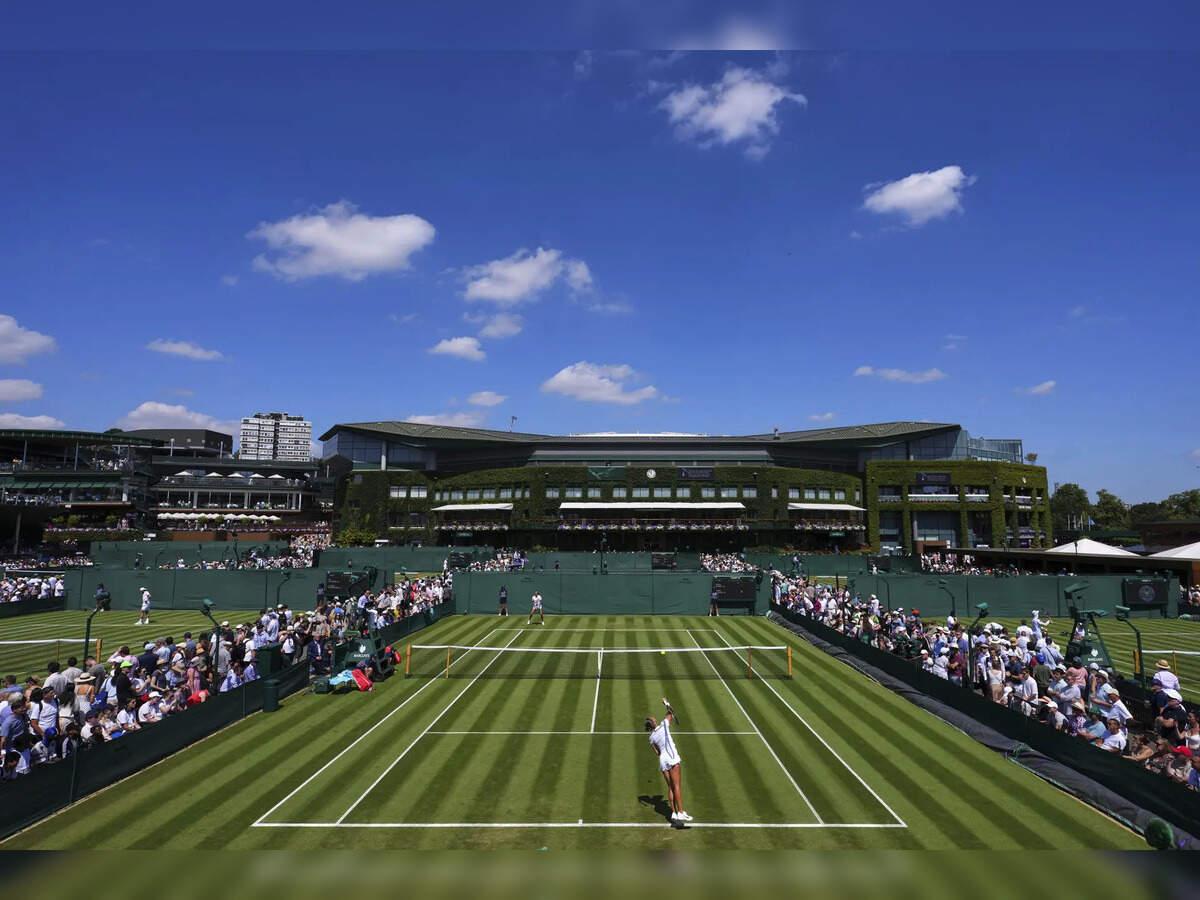
Source: ET
Technical Glitches and Player Concerns
The new system has faced criticism from players and spectators alike. A notable incident occurred during a match between Anastasia Pavlyuchenkova and Sonay Kartal, where the AI system failed to make a crucial call. The umpire had to intervene, leading to confusion and frustration among players and fans
2
.Several players have voiced their concerns:
- Emma Raducanu criticized the technology for missing an out ball, which was confirmed by television replays
1
. - Jack Draper, the British No. 1, questioned the system's 100% accuracy .
- Ben Shelton had to speed up his match due to concerns about the AI system's functionality in dimming light .
- Some players, including a deaf competitor, reported difficulty hearing the automated speaker system .
The Technology Behind the System
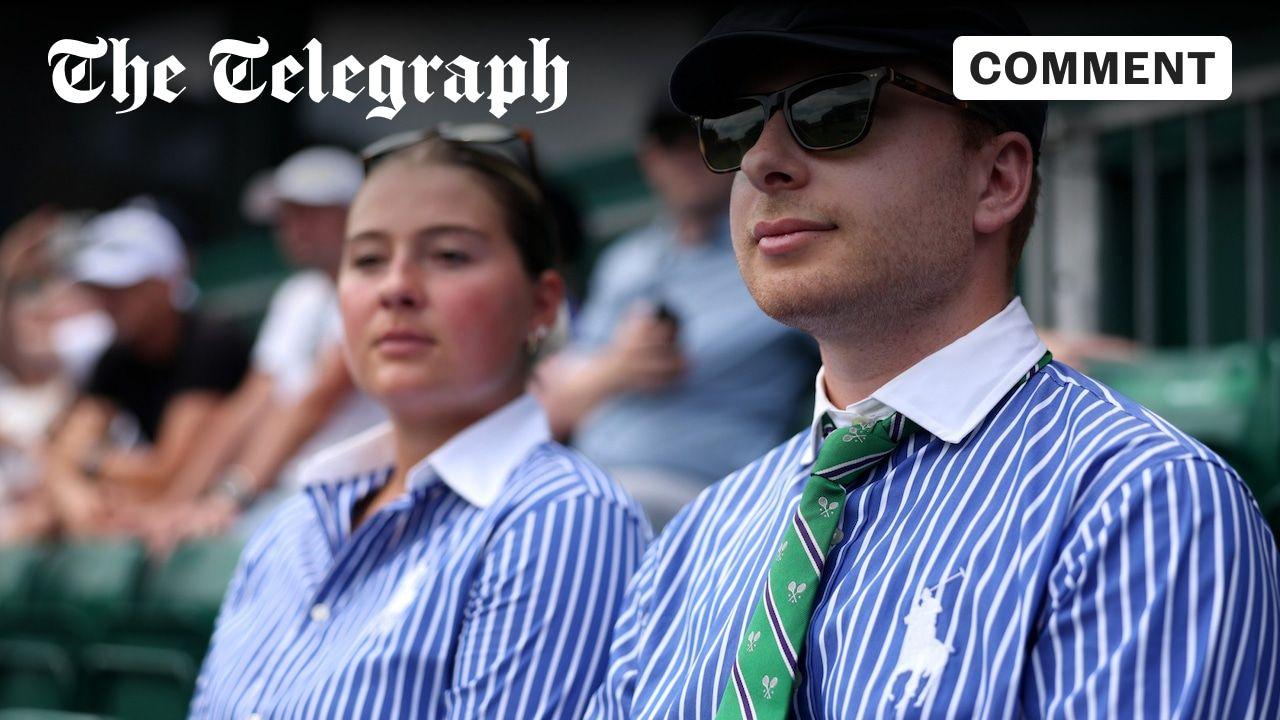
Source: The Telegraph
The Hawk-Eye Live technology uses 12 cameras to track balls across each court and monitor players' feet during serves. The data is analyzed in real-time with AI assistance, managed by a team of 50 human operators
3
.Debate Over Tradition vs. Technology
The introduction of AI line-calling has sparked a debate about balancing tradition with technological advancement in tennis. While some argue that the technology is more accurate than the human eye, others lament the loss of the human element and the "drama" associated with traditional line judging
4
.Related Stories
Addressing the Issues
In response to the criticisms, Wimbledon officials have made adjustments:
- The system can no longer be manually deactivated to prevent errors like the one in the Pavlyuchenkova-Kartal match
3
. - The All England Club remains confident in the technology, with CEO Sally Bolton stating it's the best in the business
3
.
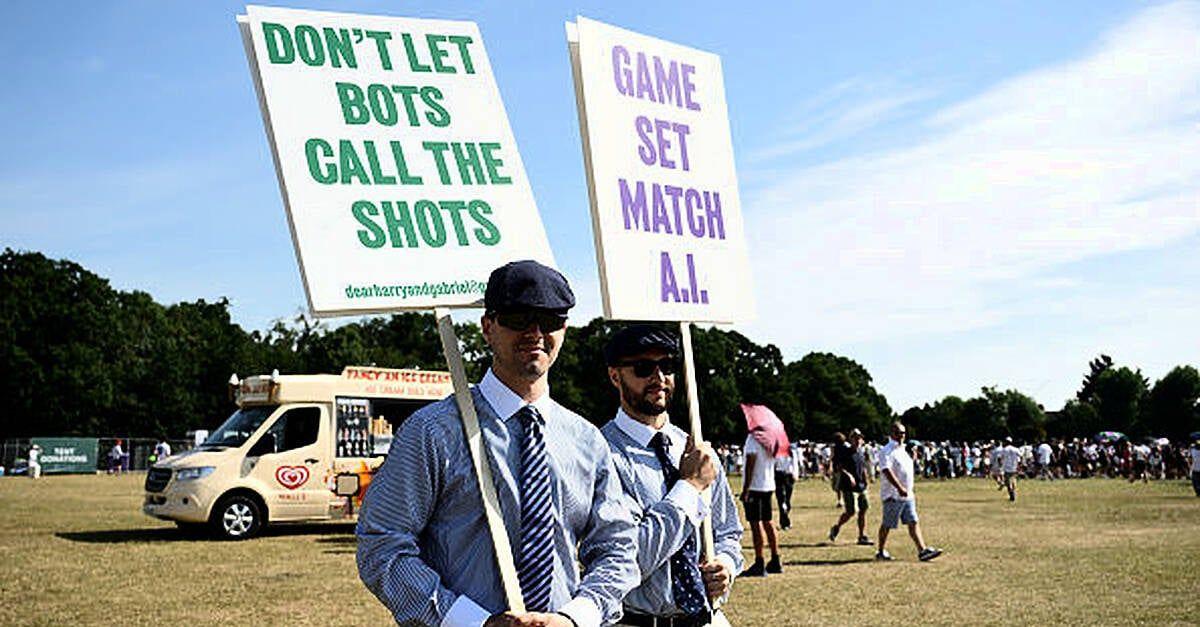
Source: BreakingNews.ie
Player Adaptations and Ongoing Concerns
As players adjust to the new system, some issues persist. Chinese player Yuan Yue complained about the low volume of the AI calls, stating that she couldn't hear them clearly
5
. The tournament is working on finding a balance between audibility and potential confusion from overlapping calls on adjacent courts.As Wimbledon continues with its AI line-calling system, the tennis world watches closely to see how this technological shift will impact the sport's future and whether it will be adopted more widely across other major tournaments.
References
Summarized by
Navi
[2]
Related Stories
Recent Highlights
1
AI Chatbots Sway Voters More Effectively Than Traditional Political Ads, New Studies Reveal
Science and Research

2
Google AI glasses set to launch in 2026 with Gemini and Android XR across multiple partners
Technology
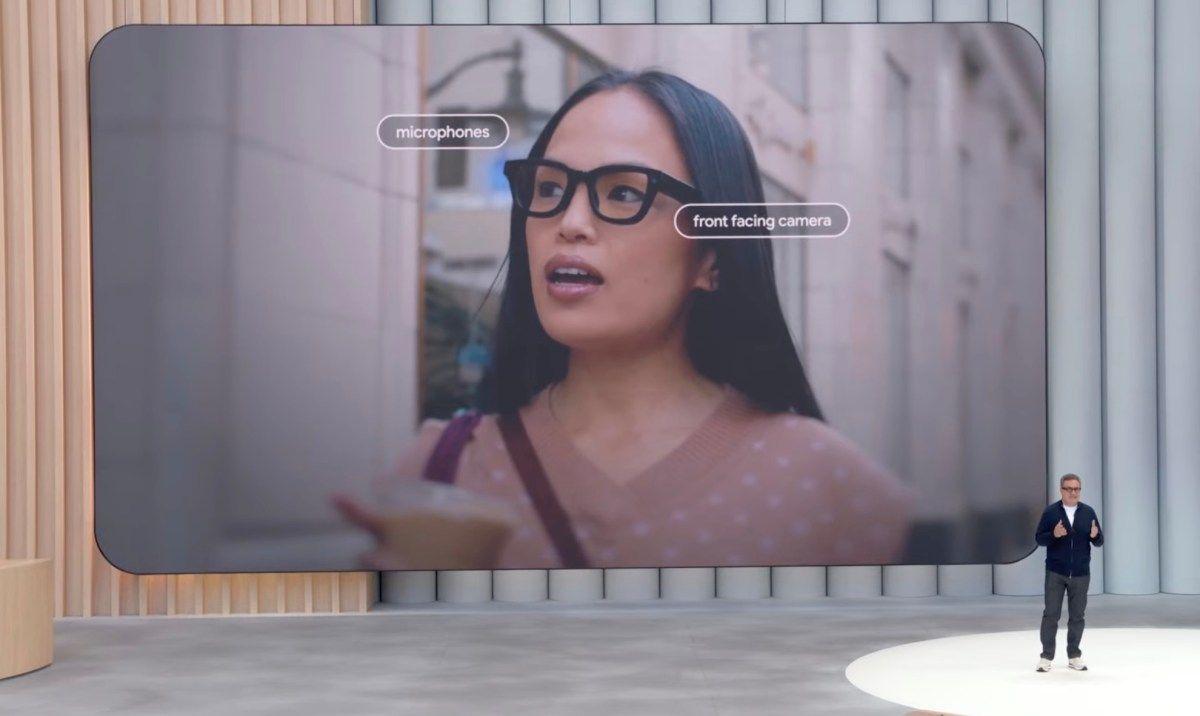
3
EU Launches Antitrust Probe Into Google's AI Training Practices and Content Usage
Policy and Regulation





